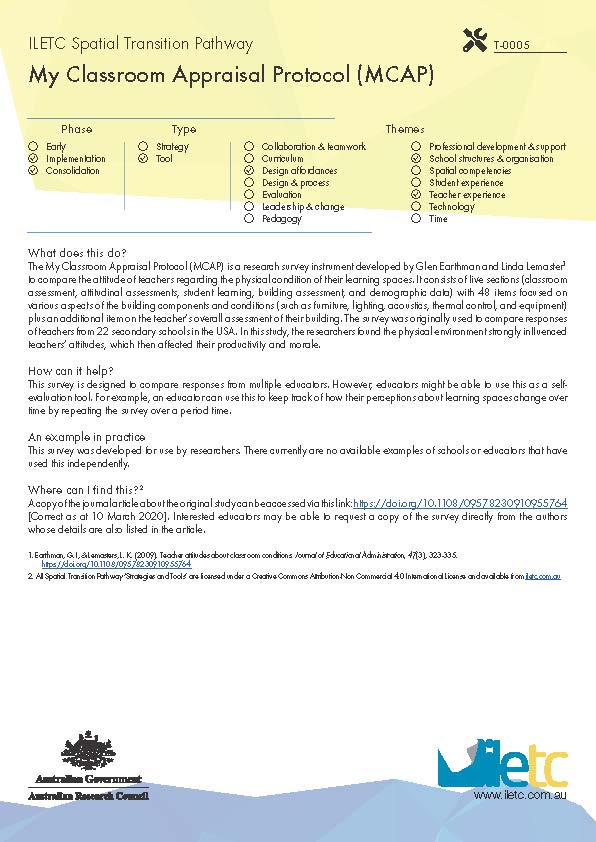| Introduction | Wayfinding activity | Spatial typologies | Spatial transition case studies | Spatial transition resources |
Spatial Transition Pathway
The Spatial Transition Pathway provides a framework for the strategies and tools which support teachers to make the journey of change into innovative learning environments. Strategy is defined as an explicit concept, theory or practice that enhances teachers’ use of innovative learning environments. A tool is an identifiable activity or protocol, that implements a strategy. You can use the database to search for strategies and tools by temporal phase or transition theme(s). If you would like to contribute a strategy or tool, please contact the ILETC team.
My Classroom Appraisal Protocol (MCAP)
The My Classroom Appraisal Protocol (MCAP) is a research survey instrument developed by Glen Earthman and Linda Lemaster1 to compare the attitude of teachers regarding the physical condition of their learning spaces. It consists of five sections (classroom assessment, attitudinal assessments, student learning, building assessment, and demographic data) with 48 items focused on various aspects of the building components and conditions (such as furniture, lighting, acoustics, thermal control, and equipment) plus an additional item on the teacher’s overall assessment of their building. The survey was originally used to compare responses of teachers from 22 secondary schools in the USA. In this study, the researchers found the physical environment strongly influenced teachers’ attitudes, which then affected their productivity and morale.

